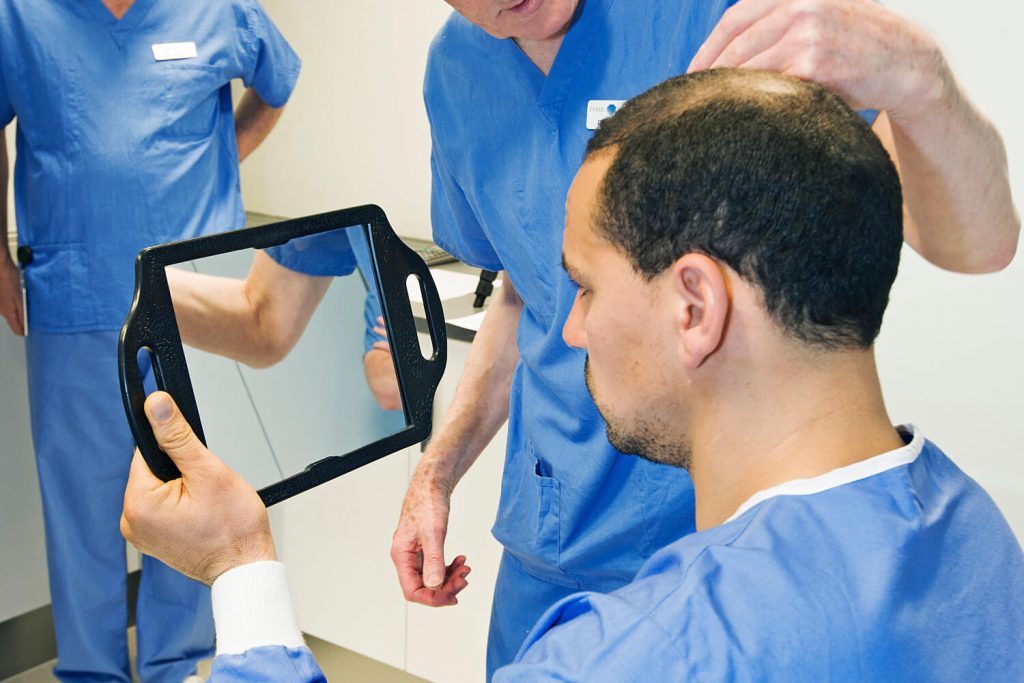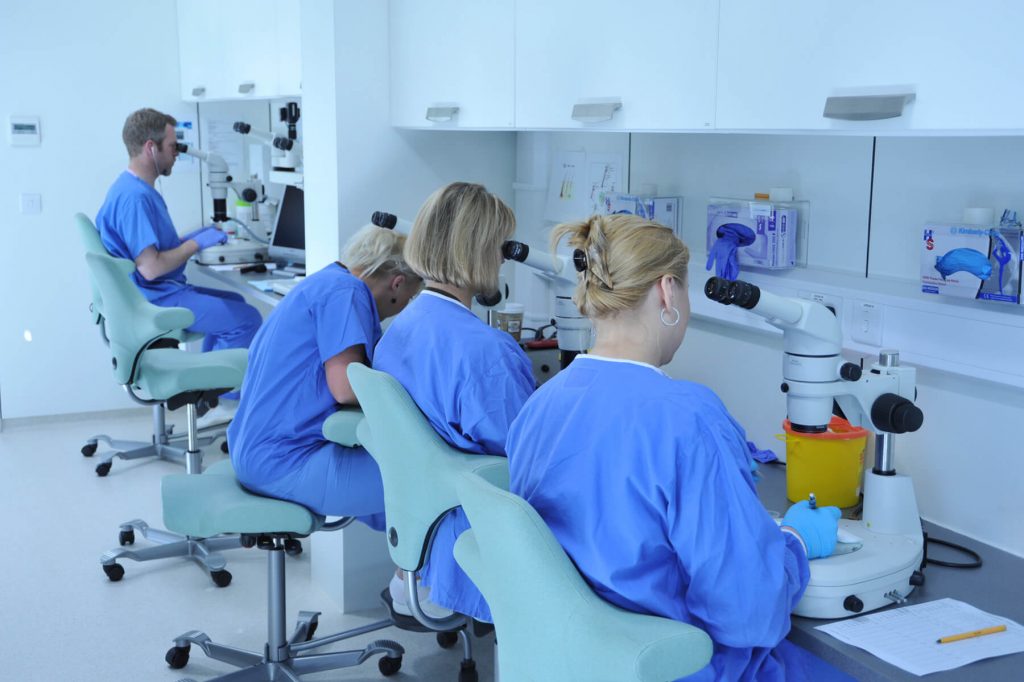About Hair Loss
What are the reasons for male pattern balding?
There is no cure for hair loss in men but there are solutions
Read more about hair loss and treatment options
Male pattern balding is genetic and can be inherited from either parent. This condition makes some hair follicles susceptible to a hormone called dihydrotestosterone (DHT) which occurs naturally in our bodies. DHT causes susceptible hair follicles to weaken. They gradually produce thinner, finer hairs. Eventually, the affected follicles stop producing hairs altogether and die. When this happens the hair is lost forever. There is no cure for pattern hair loss in men or in women.
Can you predict hair loss?
Hair loss cannot be precisely predicted. A comparison with an older relative such as a father or maternal grandfather will provide a good indication. The gene for baldness may well skip generations and/or individuals in the same family.
What is the difference between density and fullness?
Several factors contribute to hair that appears “thick” or “full”. Density, the number of hairs per sq.cm., is only one of these. Other factors include hair shaft diameter, colour, texture, and curl. These may be of equal or even greater importance than density in contributing to the appearance of a “full” head of hair.
In the early stages of balding the “thin look” is caused by a process called “miniaturization”. Hair is reduced in size but not actually lost. Therefore, while the density remains the same, an individual’s look of fullness can be significantly reduced.
Is my visit confidential?
At HRBR, we understand that hair loss can be a very sensitive subject for our patients. We carefully plan all appointments so that our patients rarely cross paths. All patients are shown to a private waiting room which is theirs to use alone while waiting for their consultation. In cases of large hair transplants, there is usually only one patient seen in a given day. All patient information is stored in our secure, password-encrypted database to guarantee complete confidentiality.
Hair Transplants
Is removing large amounts of donor hair unsafe?
The amount of donor hair required for the average large session of hair transplant surgery is well within safe limits. The hair restoration surgeon must ensure that the amount of hair that is taken from the donor area is appropriate and safe. This decision should be based on his or her experience.
Is it true that the blood supply of the scalp cannot support a large transplant?
The blood supply of the scalp is among the richest in the entire body. It can support the growth of many grafts. At HRBR, we can often transplant up to 4,000 grafts or 8,000 hairs in one hair transplant procedure using FUT.
Why do some hair transplants look so unnatural?
At HRBR, we use Follicular Unit Transplantation (FUT) and Follicular Unit Extraction (FUE) which result in a very natural appearance. Great care is taken in the design and planning of every patients hair transplant at HRBR to ensure that the transplant remains completely undetectable.
There is no excuse whatsoever for a hair transplant to look unnatural. If it does, it is simply because it is a bad hair transplant.
What makes HRBR different to other hair restoration clinics?
HRBR is one of the leading hair restoration clinics in the UK and Ireland. It is one of the few, if not the only, clinic anywhere in the world where patients are dealing with qualified medical professionals throughout the entire process. Our hair transplant surgeons are vastly experienced and have over 80 years of combined experience in the UK and Ireland. They have 20 degrees, including nine fellowships, to their names; and have trained with renowned international experts in the hair restoration field. All interaction with HRBR is with our qualified medical professionals. There are no commercial salespeople involved at HRBR.
HRBR is one of the leading hair restoration clinics in the UK and Ireland due to its overall approach to solving hair loss problems
Speak to a surgeon today about your treatment options
Our surgeons perform FUT and FUE techniques of hair transplant surgery. We do this in a similar but not identical way to other hair restoration clinics. What makes HRBR different is that we treat the procedure as if it were an organ transplant. We have a large team of qualified surgeons, nurses and technicians. The team ensures that the grafts are handled precisely and transplanted back into the patient in the most effective and time efficient manner possible. This results in a high success rate for our transplants.
We maintain the highest possible clinical standards by continuously training our staff. This is done through in-house programmes and participation at training seminars and conferences. We also conduct rigorous annual reviews.
Hair transplant surgery is a difficult decision – have you any words of wisdom?
Nobody necessarily needs a hair transplant. Trimming hair short and getting on with life is an option for some men with hair loss. The public often have little tolerance for bad hair transplants, comb-overs or wigs however they find baldness completely acceptable. It is the sufferer who often does not.
If you are considering a hair transplant, the first thing to say is that you should thoroughly research the subject to properly understand the procedure. Make sure that the team providing the treatment for hair loss can meet your expectations. Beware of commercial hair restoration clinics and salespeople who are not medically qualified to advise you. And remember that nobody can give you back a full head of hair.
The hair transplant should deal with your immediate hair loss concerns but must also take into account your future hair loss as you age. Planning for the future is critical as a hair transplant is permanent and will last for the rest of your life.
The final decision should be made by you and you alone. Nobody should influence your decision, not family, friends, doctors or salespeople. You are the only person capable of making this crucial decision. It is your self-image and appearance that is going to be changed. Take as much time as necessary to reflect wisely and to make a well-informed decision.
What we say at HRBR is that if you are unsure about whether or not to have a hair transplant, we advise you not to proceed until you are.




